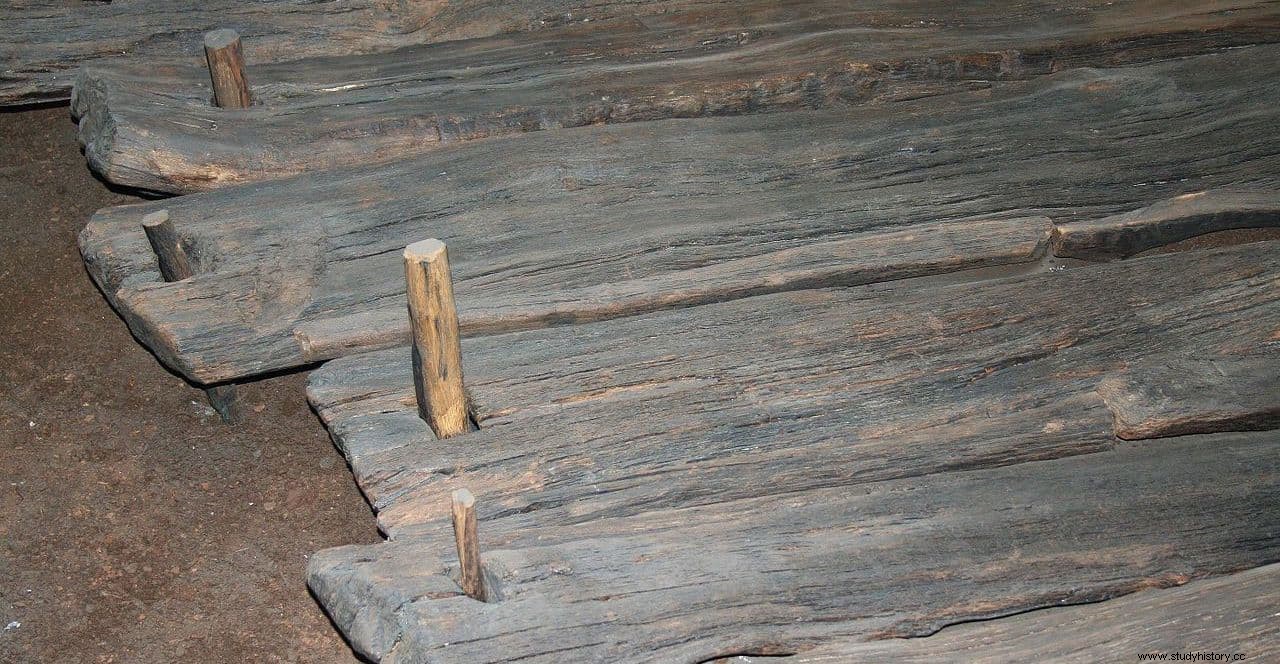Were there roads in Prehistory ? It really is difficult to imagine a road network unless we are thinking of the Flintstones' trunkmobile.
But the fact is that, at least, there was one. His remains are in Longford County. , Ireland, and obviously it's not concrete and it doesn't have traffic signs.
Officially it is called Corlea Trackway , although in Gaelic its name is Bóthar Chorr Liath and it was popularly known for a long time as the Danish Road .
To be exact, there are prehistoric clues similar in other places such as Germany, Holland or Great Britain and right here we have dealt with some, such as those grooves excavated in the rocky soil of Malta that respond to the name of Cart Ruts.

The special character of the Corlea Trackway is that it is built of wood and spread over a marshy and shifting ground , allowing to circulate on it without problems, in a similar way to the walkways that cross large wet surfaces (as in Doñana, for example) or the dune systems of the beaches.
The Corlea Trackway measured about a kilometer and was built with oak planks that measure between three and three and a half meters long by about fifteen centimeters wide, on a kind of rails separated from each other by a meter and a half, and anchored to the ground at their ends with pivots.
In 1984, a dendrochronological study of the wood dated it between the end of 148 BC and beginning of 147 BC , which places the road in the context of the late Iron Age British. Estimates suggest that some three hundred large oaks were used, although the pivots are made of birch, a similar number of which would have been used as they were smaller. There was no difficulty in finding them, as there were many forests around the swamp.

The Corlea Trackway exerts a natural fascination on the archaeologists who study it. In the first place because they initially thought it would be from the Bronze Age and it turned out to be more recent, as we saw, corroborating the analysis of carbon 14 practiced in 1984.
And second, because the road ends in a small islet that it is in the middle of the swamp but continues on the other side in a second half of similar length and from the same period, which surely involved a considerable number of people in the work; enough in any case to have it ready in only one year .
As if there weren't enough, then two more sections appeared. However, no question is as suggestive as its utility :Why did you want to save the passage over the swamp?
There are as many theories as there are scholars, from the one that proposes a road network that connected major Celtic centers like Ulster Eamhain Macha or Connachts, to which he speaks of a simple way to cross that swampy area. There is also one that suggests that the intention was not that but the opposite:get into it , probably for ritual reasons.
After all, in an old legend from Irish mythology titled Tochmarc Étañne (The courtship of Etain), partially preserved in the manuscript Lebor na hUidre (12th century) and in full in the Yellow Book of Ecan (15th century), there is a reference to the tasks that King Eochu Airem entrusts to the hero Midir to recover his beloved Etain, including planting a forest and building a road through the swamp of Móin Lámraige.
The archaeological campaign, developed in 1991 by Barry Rafferty (University College Dublin) in a bit of a hurry because the place is right in the middle of a peat deposit and the excavation work threatened to destroy it, it allowed to rescue fifty-nine planks that were later enlarged with another seventy-six extracted a little further, in Derryoghil.
Studying them carefully, it was concluded that they were designed to be crossed on foot, although some segments showed signs of having supported road traffic. The truth is that this extraordinary road could only be used for a short time, a few years, since little by little it was sinking into the ground by its own weight.
Something that, as usual, allowed its preservation for two millennia so that we can now enjoy it:the Corlea Trackway Visitor Center of Longford exhibits a reconstructed section of eighteen meters along with a series of contemporary pieces.
